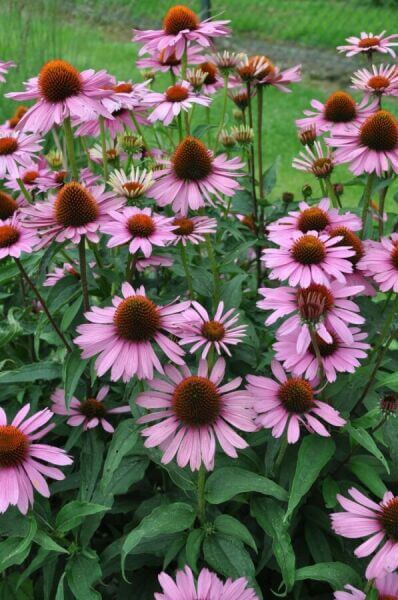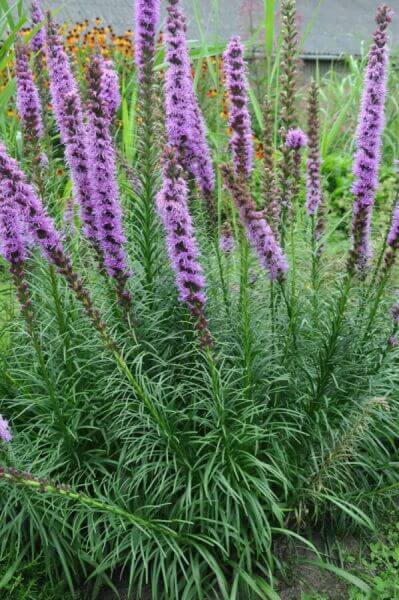Hedge Plants For Visual Barriers
Hedge Plants For Visual Barriers
Blog Article
Hedge Plants For Container Hedges
Improve your garden's attraction with rich hedge varieties such as Yew (Taxus), Thuja, Laurel, Photinia, and Bamboo, celebrated for their structural stability and ecological advantages.
Yew and Thuja provide evergreen coverage and winter season resilience, while Laurel uses rapid growth and broad, aromatic leaves.
Photinia adds seasonal appeal with its lively red foliage, and Bamboo lends a low-maintenance, serene atmosphere.
These hedges enhance air quality, decrease sound, and develop tranquil, private spaces.
Appropriate planting, spacing, and upkeep ensure vigorous development and eco-friendly harmony.
Explore how these rich ranges can raise your garden's appeal and well-being.
Key Takeaways
Change Your Garden With Lush Hedge Ranges
- Select Yew for its thick, evergreen growth and unrivaled longevity.
- Select Laurel for its fast growth and broad leaves, guaranteeing fast privacy.
- Select Photinia for its lively seasonal foliage, which turns a striking dark red.
- Make use of Bamboo for a low-maintenance, winter-hardy hedge with visual appeal.
- Space plants 2-3 per meter and prune routinely for ideal development and health.
Popular Hedge Plants
When changing a garden with lavish hedge ranges, it's necessary to consider popular hedge plants such as Yew, Thuja, Laurel, and Photinia due to their unique qualities and advantages.
Yew (Taxus) is extremely respected for its durability and thick, green growth, making it a prime choice for withstanding landscapes.
Thuja is noted for its evergreen foliage and robust winter resilience.
Photinia adds seasonal vibrancy with red leaves that darken over time, creating dynamic visual appeal.
Laurel offers quick development and aromatic, broad leaves, perfect for quick privacy.
Additionally, Bamboo is an excellent choice for atmosphere, using a low-maintenance, winter-hardy option that boosts the garden's visual with its sophisticated, swaying walking sticks.
These selections cater to a range of horticultural requirements and choices.
Benefits of Garden Hedges
Garden hedges offer a plethora of advantages, making them a valuable addition to any landscape. These natural barriers are cost-effective to carry out and supply considerable wind protection, boosting air flow and contributing to sound reduction. The dense foliage of hedges like Thuja and Beech makes sure privacy by blocking exposure, creating a tranquil and secluded environment.
Hedges likewise play an essential role in microclimate guideline, offering a stable environment that promotes plant growth and lessens temperature variations. Their elaborate leaf structures filter pollutants, enhancing air quality and adding to a healthier garden community.
Moreover, hedges master sound reduction, soaking up and deflecting sound waves to lower ambient sound levels. This double performance of providing both acoustic and visual privacy improves the general tranquility and visual appeal of any garden.
Planting and Upkeep Tips
For a successful hedge, precise preparation of the planting location is essential. Make sure the soil has correct pH and drainage to support strong root advancement.
Area the plants appropriately for the selected types. Water the hedge regularly during its initial growth stage, changing as needed with seasonal changes.
Execute a organized bug control and disease prevention technique, utilizing natural or chemical treatments when required. Routinely examine for aphids, termites, and fungal infections.
Apply mulch to maintain wetness and suppress weeds. Seasonal pruning promotes dense growth and air circulation, necessary for plant health.
Following these guidelines will help you cultivate a dynamic, properly maintained hedge that boosts the beauty of your garden.
Spacing and Trimming Guidelines
Spacing and Trimming Guidelines
Appropriate spacing and cutting are vital for cultivating healthy, aesthetically appealing hedges. Adequate spacing makes sure each plant receives adequate nutrients, light, and air flow.
Follow these standards for ideal hedge upkeep:
- Spacing: Position hedge plants 2-3 plants per meter to encourage robust growth.
- Pruning Techniques: Regular pruning is essential for maintaining wanted hedge height and shape. Cut brand-new development in summertime and cut back older wood during winter.
- Seasonal Care: Adjust trimming approaches and schedules according to seasonal requirements to make sure plant health.
- Hedge Height: Frequently display and cut to preserve the wanted hedge height and attain uniform visual appeals.
Adhering to these actions will guarantee your hedge prospers, enhancing both the appeal and functionality of your garden.
Picking the Right Hedge
Selecting the Right Hedge
Selecting the proper hedge includes assessing factors such as fully grown height, foliage density, and environmental resilience. Effective hedge plant selection needs understanding each species' growth attributes and site-specific versatility.
For example, Yew (Taxus) uses outstanding longevity and thick growth, while Thuja is significant for its winter resilience. In addition, considering upkeep requirements is essential; fast-growing types like Laurel or Privet demand routine trimming, whereas low-maintenance alternatives like Bamboo or Ivy might be more effective for those seeking very little upkeep.
Ecological factors such as soil type, light accessibility, and moisture conditions must likewise guide the choice procedure. This mindful technique makes sure the selected hedges will flourish, offering both visual and functional benefits to the garden landscape.
Shipment and Planting Advice
To guarantee your hedge plants grow, they must be delivered by specialized carriers and planted immediately upon arrival.
Follow these important actions for successful planting:
- Soil Preparation: Improve the soil with raw material to improve drain and nutrient material.
- Planting Depth: Develop a trench two times the width and equal to the depth of the root ball.
- Watering Methods: Water thoroughly after planting, keeping the soil consistently moist but not saturated.
- Mulching: Use a layer of mulch to maintain moisture and suppress weeds.
Consumer Assistance and Service
Given the important function of timely help in horticultural pursuits, our customer support group is offered six days a week through telephone, e-mail, and social networks to offer professional recommendations and swiftly attend to any issues. Their dedication to fast action times guarantees client fulfillment by fixing inquiries connected to plant health, optimal planting techniques, and upkeep schedules.

Reaction Time
----------------------
Within 24 hours
6 days a week
This detailed support system, reinforced by an outstanding 9.3/ 10 client score, highlights our dedication to boosting the gardening experience for every single client.
Frequently Asked Concerns
For How Long Does It Take for Hedge Plants to Establish?
Hedge plants usually need one to 3 years to end up being totally established, with the precise period differing by species and growing conditions.
Efficient care throughout this important period is necessary for robust development. Constant watering, watchful weed control, and proper fertilizer application are essential in promoting strong root development.
For instance, fast-growing types like Laurel might establish more quickly, while slower-growing varieties such as Yew may take longer. Persistent maintenance speeds up the establishment procedure, leading to dense and healthy hedges.
What Are the very best Hedge Plants for Privacy?
The question of the very best hedge plants for privacy includes examining evergreen and deciduous options.
Evergreen hedges like Thuja, Laurel, and Cypress supply year-round coverage, making sure continuous personal privacy.
On the other hand, deciduous hedges such as Beech provide seasonal privacy, shedding leaves in cooler months.
Secret maintenance tips for personal privacy hedges consist of regular trimming, fertilizing in spring, and correct spacing-- generally 2 to 3 plants per meter.
In addition, consistent watering and diligent weed removal are vital for promoting healthy, dense development.
Can Hedge Plants Attract Wildlife to My Garden?
Yes, hedge plants can draw in wildlife to your Additional info garden by offering essential advantages like shelter, food, and nesting sites, thus enhancing regional biodiversity. For example, yew, holly, and laurel are excellent for drawing in birds, while ivy supports a range of insects.
Nevertheless, it's crucial to keep in mind that there are some downsides, such as increased upkeep to handle bugs and regular maintenance. Carefully picking and preserving hedge ranges can assist balance these advantages and drawbacks, ultimately fostering a sustainable and dynamic community in your garden.
Exist Any Blooming Hedge Plants Available?
Yes, there are flowering hedge plants offered that can boost the beauty of your garden.
For example, Elaeagnus, likewise called Olive Willow, produces fragrant white flowers in the fall, including a touch of beauty.
Photinia, another popular choice, showcases dynamic red leaves that develop into a rich green, developing a dynamic visual impact throughout the seasons.
To ensure these plants thrive, it's important to practice proper pruning strategies and seasonal upkeep, such as trimming new growth in the summer season and cutting back in the winter.
These steps will assist keep the health and aesthetic appeal of your blooming hedges.
How Do I Avoid Pests in My Hedge Plants?
To avoid pests in hedge plants, use natural pest control techniques and keep proper hedge care. Present useful bugs like ladybugs, which prey on harmful bugs, to develop a balanced community.
Regularly inspect your hedges for signs of problem and immediately eliminate any affected parts to avoid the spread. Guarantee the health of your hedges by using balanced fertilizers and offering sufficient water.
Use mulching to maintain soil moisture and proper spacing to reduce plant stress and promote robust growth. These practices collectively help in reducing bug issues and maintaining a healthy hedge.
Conclusion
In essence, picking the ideal hedge varieties such as Yew, Thuja, and Laurel can transform any garden into a tranquil haven. These plants supply year-round greenery, boost aesthetic appeal, and offer useful benefits like sound decrease and wind protection.
Appropriate planting techniques, accurate spacing, consistent watering, and seasonal cutting are important for optimal development.
Dependable shipment services and skilled consumer assistance make sure a seamless experience from purchase to planting, making it easier than ever to raise your outdoor area.
Garden hedges provide a wide variety of advantages, making them an important addition to any landscape. These natural barriers are cost-efficient to carry out and provide considerable wind security, boosting air circulation and contributing to noise reduction. The dense foliage of hedges like Thuja and Beech ensures personal privacy by blocking visibility, creating a serene and remote environment.

Pruning Strategies: Regular pruning is vital for keeping desired hedge height and shape. Trim new development in summer season and cut back older wood throughout winter season.
Report this page